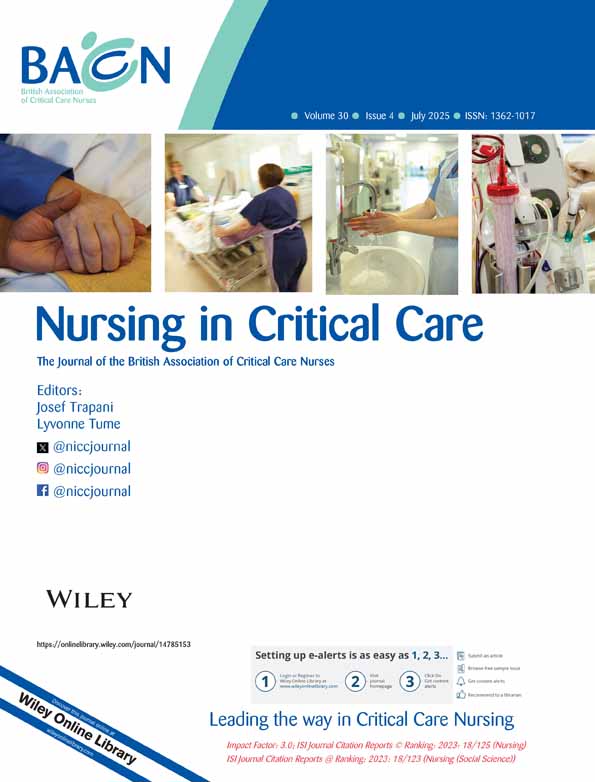Validation of the Anticipatory Grief Scale through Confirmatory Factor Analysis and Latent Profile Analysis
Funding: This work was supported by National Natural Science Foundation of China (72004243).
Yali Jiang and Chunyi Wang contributed equally to this study.
ABSTRACT
Background
Anticipatory grief is caregivers' response to perceived multiple losses during their loved one's life-threatening illness or end-of-life care, which impairs their well-being and leads to adverse bereavement outcomes. Given the severe psychological issues often faced by family members of the patients of the intensive care unit (ICU), it is crucial to address this form of grief.
Aim
To validate the Chinese Anticipatory Grief Scale and identify subgroups of anticipatory grief.
Study Design
From November 2022 to December 2023, a cross-sectional survey was conducted among family members of patients admitted to ICUs of two tertiary care hospitals located in Guangdong Province, China. A total of 233 eligible family members of ICU patients were included in the analyses. The study used confirmatory factor analysis to assess the scale's structure, and internal consistency was examined. Latent profile analysis identified groups with varying anticipatory grief levels, while univariate and logistic regression analyses explored associated factors.
Results
The revised six-factor model fit well (χ2 = 573.602, df = 299, χ2/df ≈ 1.918, p < 0.001; comparative fit index [CFI] = 0.903; Tucker-Lewis index [TLI] = 0.886; root mean square error of approximation [RMSEA] = 0.063; standardised root mean square residual [SRMR] = 0.064). The Anticipatory Grief Scale exhibited excellent internal consistency with Cronbach's α 0.938. Two profiles emerged: ‘adaptive coping’ (61%) and ‘negative cognition’ (39%). Family members' physical health and relationship with patients significantly predicted the latent profile classification of anticipatory grief (p < 0.05).
Conclusions
The revised Anticipatory Grief Scale is an effective and valid tool for assessing anticipatory grief among family members of ICU patients in China, and its identification of notable heterogeneity in grief patterns provides a basis for designing targeted interventions.
Relevance to Clinical Practice
This study has validated the Anticipatory Grief Scale, confirming its reliability and validity for assessing anticipatory grief in family members of ICU patients. By identifying two distinct grief profiles, it offers critical care nurses new insights to design targeted interventions, enhancing their ability to provide tailored support and improve bereavement care.
Conflicts of Interest
The authors declare no conflicts of interest.
Open Research
Data Availability Statement
The data that support the findings of this study are available from the corresponding author upon reasonable request.




